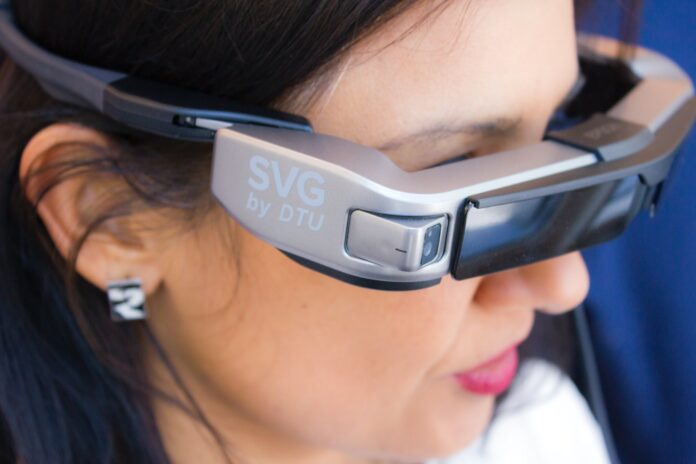Advancements in technology have dramatically evolved and radically changed the way we conduct our daily lives. The implementation of technology has significantly shifted the world from analog to digital. Smartphones are one of the best examples of how intelligent devices have transformed over time.
Today’s handsets are not only capable of carrying out numerous tasks using integrated intelligent technology, but they also hold the capacity to incorporate new software and technologies like AI and AR, enhancing user experiences further.
As society leisurely becomes accustomed to new devices and technologies, their acceptance increases over time. If we consider the adoption of smartphones made popular by their camera features, we can see a clear and steady rise continuing well into the future.

(Image Source: Inkwood Research)
Headphones have been a significant part of smartphones’ adoption by civilisation as they have become key accessories. Apple started a wireless earbud trend by getting rid of the headphone jack on their handsets, prompting users to buy their AirPods, and Samsung followed suit.
However, in doing so, both giants added a small compilation to the user experience. For example, many individuals who enjoy jogging/running on a sunny day will find themselves wearing sunglasses and in-ear wireless headphones.
The complexity in using so much on our ears, now adding face masks, can cause discomfort. For this reason, many major tech companies are in the race to create smart glasses that have the potential to replace the need for headphones.
The Evolution of smart glasses
The aim of the game for most Big Tech is to be the dominant producers of smart glasses used in mainstream tech as a fashion accessory with extended tech capabilities worn by all. We can potentially foresee its success following the adoption of wearables currently on the market like smartwatches. To be appealing to a mass audience, the smart glasses will need to feature specific properties. Outside of those features, they also need to be sleek, fashionable, durable, and lightweight for a comfortable fit all day long.
Google, Apple, Amazon Echo, and Microsoft are a few brands working on some form of smart glasses aiming to change the way we view the world. In most cases, smart glasses are built with technology that helps users see and interact with information like never before.

(Image Source: Eyeglasses.com)
Google has attempted, on two occasions, to develop and produce smart glasses. Although their second edition of smart glasses is being used in working environments such as manufacturing, healthcare, and logistics, they have a long way to go before they can be anything close to appealing and needed by people for everyday use.
However, Huawei has evolved the smart glasses to meet ordinary consumers’ needs by merely adding an audio element. The tech giant launched their Huawei x Gentle Monster Eyewear II smart glasses and sunglasses. The frames house a hidden speaker in the arm, making them discrete but enjoyable.

(Image Source: Huawei)
The semi-open speaker offers impressive sound levels and clarity and is paired with pulsating inversive sounds waves coming directly off the eyewear to minimise audio leaking. The glasses come equipped with versatile touch controls, as represented by the image above. The swipe-based audio control lets the skip tracks or adjusts the volume. The tap sensor is a double-tap voice control that can wake the voice assistance, answer or end calls and play and pause music. The users simply pinch the sensor to enter pairing mode to pair the glasses to a smart device.
Smart glasses such as these have mass attraction and the potential to replace headphones as they offer simplicity and a combined job of two products in one. However, if we consider the way smart glasses have evolved and imagine a merge between Huawei and Google’s tech, do smart glasses have the scope not only to kill off our love for headphones, but replace our smartphones?
The demise of Smartphones thanks to Smart Glasses
It is hard to imagine a technology that will come along and pull our smartphone right out of our hands. However, we once thought this about smartphones. And in all trueness, even the very first smartphone was unpopular.
Smart glasses might be the key to giving us our hands back, making them free to do what we want while still receiving and interacting with the information we need to. No doubt, it’s just another form or type of screen interaction, much closer to the eyes. But if smart glasses can give us the needs we currently get from our smartphones, what’s to say they can not replace them?
Although it’s safe to say smart glasses still have a long road ahead of them before they can overtake smartphones, its steady increase represented in the graph below indicates an increasing interest in their use. Especially when considering their use in collaboration with other technologies such as VR and AR.

(Image Source: Tech Crunch)
Currently, we have technology that allows users to make and receive calls from their smartwatches. Other smart glasses developed by South Korean scientists can collect health data that goes far beyond smartwatches. They are housed with electrodes that measure electrical brain signals and sensors which detect motion and UV light. Considering these advanced features and many more already present on smart glasses, their ability to replace smartphones doesn’t seem alien.
PLEASE SUPPORT US FOR JUST £2 A MONTH







